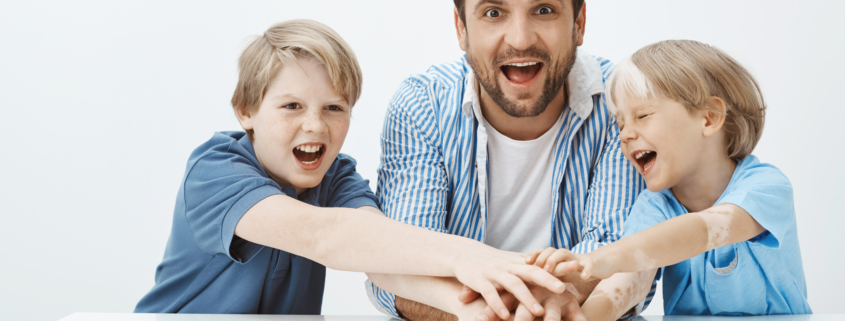How to leverage positive behaviour
Human beings learn by copying what they see, what they experience in their surroundings. The most important role models for a child are their parents, who also teach them positive behaviour. When it comes to teenage level the peer groups/friends take on that role. The impact school has on young people is by far less influential. That is why it is essential that there is a strong collaboration between school and family.
Positive behaviour impacts our everyday life
School Beyond Limitations puts a strong emphasis on the notion that our brains can rewire any behavioural pattern if we are ready to embrace change. It is proven that positive behaviour can be instilled in each student if, as mentioned above, all parties involved in the education process work well together. The more family and school use similar strategies and the more they prompt positive behaviour by role modeling, by fostering an environment based on well-being and on trust, the more young people will use the same strategies in their own lives as any human being learns the most by copying the behaviour of their role models.
Positive behavioural patterns help a human being eventually experience positive emotions which, by nature, each individual is striving for. If something feels good we want to repeat this experience all over again. This ignites us to do anything in order to experience the same good feeling. That is why School Beyond Limitations puts a strong emphasis on a learning environment in which each individual sees her/himself as the unique being they are by appreciating themselves as much as each other. Such an environment gives them the foundation to explore the world around them through the lenses of ‘making possible’.
The environment of well-being
The focus on establishing an environment of well-being has been launched in 1998 through the Positive Psychology Movement by Martin Seligman who, together with his team, researched questions such as
- Why are some people happier or more successful than others?
- What impact have emotional states on human behaviour and their behavioural outcome?
Seligman’s research outcomes have promoted the interest in positive psychology and the introduction of well-being lessons or lessons on ‘happiness’ in many schools in the Western hemisphere. At School Beyond Limitations we go even a step further: personal development strategies of any kind such as emotional intelligence, Human Design tools, meditation, mindfulness have been integrated into the fabric of SBL’s curriculum.
Students see themselves as the creators of their lives
It is proven that positive emotions are associated with situations which present opportunities rather than threats. Students also learn to navigate the vast spectrum of all emotions (the so called positive and the so called negative ones) in order to make conscious choices. They learn to appreciate each emotion for what they are and to apply strategies that help them navigate their unique emotional spectrum with care by learning that they have the power to rewire their brain accordingly. Instead of avoiding situations they are encouraged to look at them with a solution-oriented and non-judgemental mind. That allows them to train their emotional muscles.
Can you imagine what happens if a student suddenly realises that, whatever experience s/he is going through, each experience can be twisted by using powerful tools that help them see themselves as the creators of their lives instead of being the victim?
As a side effect, the display of positive emotions in an individual leads to the establishment of trust. Moreover, individuals displaying positive emotions become more attractive to their peers and this leads eventually to more success – eventually, in all areas of life. And last but not least positive emotions such as joy, happiness, contentment, satisfaction have a thought and action provoking effect on building cognitive and emotional resources for the individual’s now and future. The brain learns, as mentioned above, from experience, and the more our actions become a habit the more our brain learns new patterns. Such new learned patterns leverage any learning outcome accordingly.




This has to be the best leverage positive behaviour article.
Thank you so much for your feedback! What does it make the best positive behaviour article, Saafi?
thanks for info
I’ve come to realize the transformative power of positive behavior in traditional recovery. During a challenging period of my life, I learned that adopting a mindset focused on gratitude and self-compassion can be remarkably healing. Initially, it felt unnatural to practice positivity amidst adversity, but gradually, small acts of kindness toward myself and others began to shift my outlook. One profound experience was when I started keeping a gratitude journal. Each day, I would note even the smallest moments of joy or achievements. This practice not only uplifted my spirits but also reinforced a sense of accomplishment and progress, no matter how minor. Positive behavior became a catalyst for change, enabling me to rebuild my confidence and resilience.